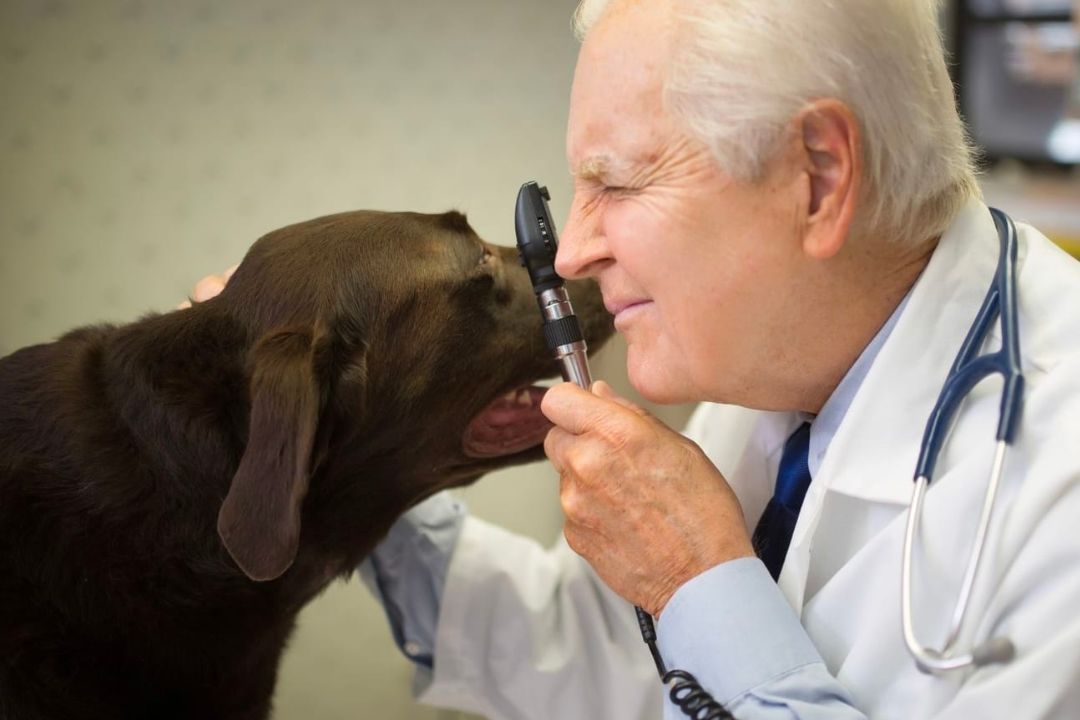Basic treatment of a dog stye is usually uncomplicated and can be done at home, as it involves simply washing the area and applying warm compresses. Medication sometimes helps, depending on the cause of the problem, and these are available as drops, ointments and oral chews or pills. In some cases, a veterinarian has to remove the stye physically, or he provides a differential diagnosis. Both owners and vets should exercise safety precautions, such as wearing gloves, while providing treatment.
How do I Treat a Dog Stye?
In this article

Identifying a Stye on Dog Eye
A stye on a dog's eye is a red, painful bump caused by a bacterial infection in the eyelid's oil glands. You can spot it easily by looking for swelling or discharge from the eye. Early detection and treatment can prevent the stye from becoming severe and affecting your dog's vision.
Washing
Sometimes, dirt, oil and other debris such as dead skin clogs hair follicles very close to the eyelid, causing swelling and irritation. In other cases, bacterial infections are the problem, and occasionally it is the meibomian glands around the rim of the eye that become red and puffy. Initial treatment of a dog stye generally starts with a very gentle washing of the eyelid and surrounding area, because it removes whatever is causing the clog, or cleans away the bacteria. A plain, clean washcloth or gauze pad works just fine for this task.
Our favorite products to help wash your pups eyes are:
- Our Top Pick - Vetericyn Plus All Animal Eye Wash
- Best Value - Nutri-Vet Eye Rinse Liquid For Dogs
Anxiety
Anxiety and some pain might occur when dogs are dealing styes. As we mentioned above the area around the eye can get irritated either due to bacterial infection or debris that has gotten very close to the eyelid and caused irritation. As a result, if you notice your pet is in more pain or feeling discomfort it could help to give them something that helps calm them down until the stye has been appropriately dealt with.
Our favorite products for anxiety are natural remedies like:
- Our Top Pick - Canna-Pet CBD Capsules (choose based on dog size)
Compresses
Mild heat generally encourages pores to relax and open, making it easier to clean them out. It also can encourage glands to drain. Once the eye is clean, applying a warm compress to the dog stye several times a day can speed recovery. Warm cloths are a good choice, but owners also have had success with other items, such as teabags or rice heated for a few seconds in the microwave.
Our favorite compresses for pups are:
- Our Top Pick - Smart Pet Love Heat Pack
Medication
When bacteria is the source of the problem, medicated eye washes or ointment can address the infection. These are usually fairly easy to apply by tilting the animal’s head up, pulling down gently on the eyelid and letting the medication drip down from the bottle or tube. A veterinarian might prescribe an oral antibiotic instead of or in addition to these options, which is relatively easy to hide in food. Depending on the severity of the condition, he also might recommend cortisone, a substance that reduces the inflammation response and associated swelling. Owners generally use these more advanced medications with older animals that chronically get styes.

Top recommended medications are:
- Combats Infection - Terramycin Ophthalmic Ointment
- Soothes Burning + Irritations - MicrocynAH Ophthalmic Pet Gel
Professional Removal
In most cases, a dog stye goes away on its own, so veterinarians usually try a course of washing, compress application and medication first. If it gets worse, however, or if it is severely bothering the animal and interfering with vision, a professional might choose to remove it manually. To do this, he opens the stye with a sterilized needle or scapel so the infection can drain or be wiped away. The procedure generally requires sedating the dog, both for safety and so the animal doesn’t become unnecessarily stressed. Afterward, a basic saline eye wash for pets or even a common contact lens solution is useful for keeping the area clean.
Owner Safety
Just like people, most dogs react instinctively when something comes too close to their eyes, and not all dogs are very cooperative if someone tries to hold something on their face for an extended period. To make accessing the eye easier, and to avoid nips or bites, it might be necessary to have another person hold the animal still or wait until the dog is very relaxed before trying to apply treatment. Using a muzzle is another method of staying safe.
Wearing some latex or similar gloves is a good idea when working on a dog stye, because it prevents an owner from coming into direct contact with any bacteria. Conversely, it keeps anything that still might be on a person’s skin from getting in the eye and causing additional infections. The majority of veterinarians and other medical professionals wash their hands before and after this type of work as an additional precaution even when gloves are available.
Considerations and Additional Tips
Dog styes that do not respond to initial home treatments typically warrant a visit to the vet, because in some cases, what looks like one can be another problem, such as a benign or cancerous tumor. Only a trained professional can provide a final diagnosis in these cases. Additionally, this condition sometimes appears or repeats because of something in the animal’s environment, such as a particular ingredient in a pet shampoo, so analyzing when the problem started or when it seems to flair can provide excellent clues about what is causing the symptoms. If a pet can’t seem to leave its eye alone, a cone, also called an Elizabethan collar, can make it difficult to rub and scratch the area.
Get helpful pet care information and other helpful resources by visiting Pettable's blog.





.jpeg)




